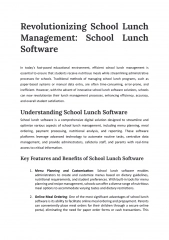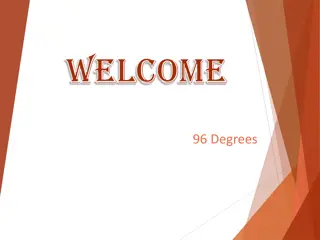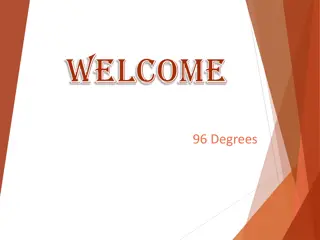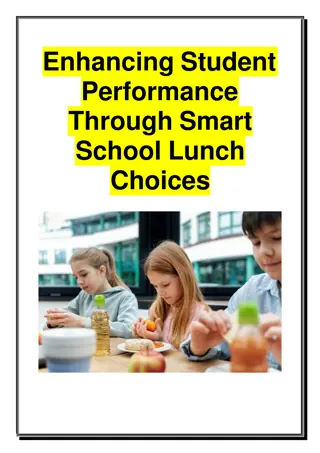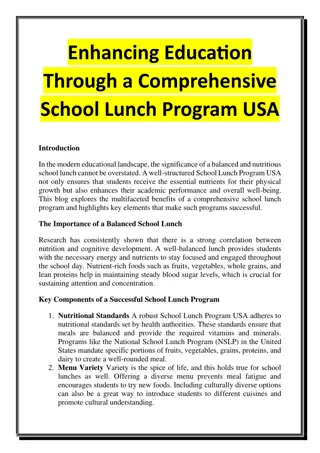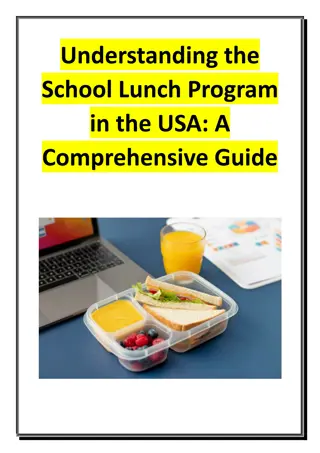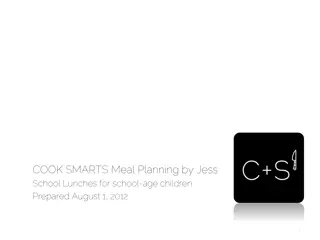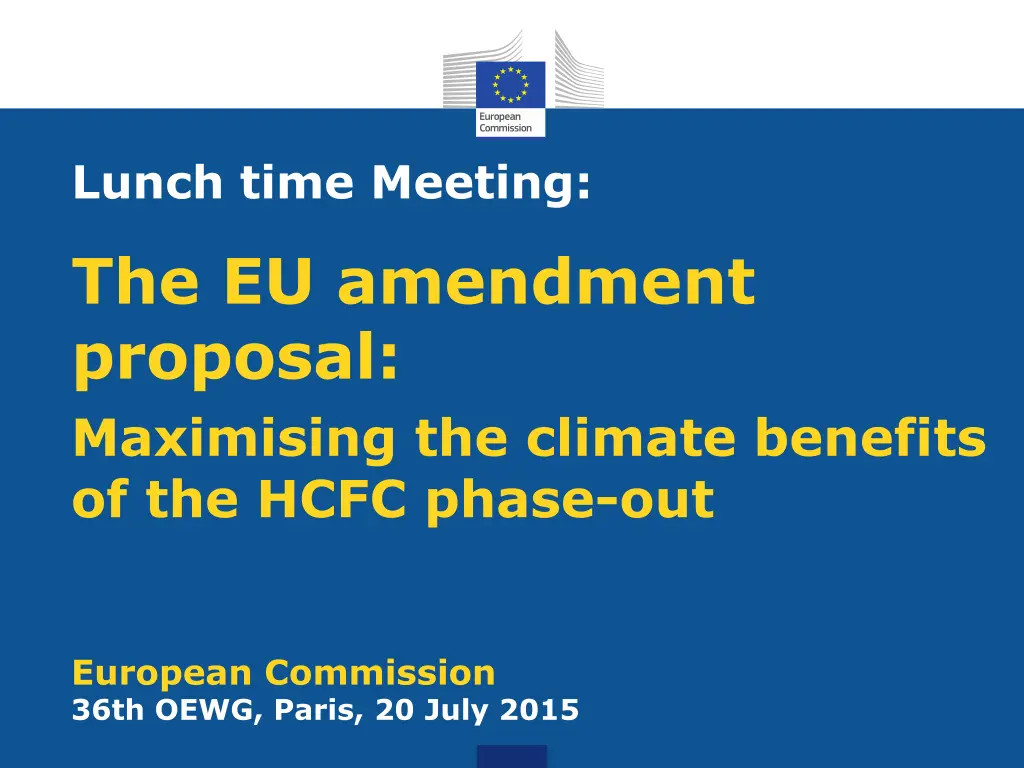
Maximising Climate Benefits: EU Amendment Proposal for HCFC Phase-Out
Discover the European Commission's proposal at the 36th OEWG in Paris, focusing on maximising climate benefits by phasing out HCFC. Learn about key aspects such as differentiation between non-Article 5 and Article 5, reduction schedules, and the "basket approach." Explore the background, strategies for non-Article 5 and Article 5 parties, and the importance of cooperation under the Montreal Protocol to address HFC consumption and production issues effectively.
Download Presentation

Please find below an Image/Link to download the presentation.
The content on the website is provided AS IS for your information and personal use only. It may not be sold, licensed, or shared on other websites without obtaining consent from the author. If you encounter any issues during the download, it is possible that the publisher has removed the file from their server.
You are allowed to download the files provided on this website for personal or commercial use, subject to the condition that they are used lawfully. All files are the property of their respective owners.
The content on the website is provided AS IS for your information and personal use only. It may not be sold, licensed, or shared on other websites without obtaining consent from the author.
E N D
Presentation Transcript
Lunch time Meeting: The EU amendment proposal: Maximising the climate benefits of the HCFC phase-out European Commission 36th OEWG, Paris, 20 July 2015
Programme Short description of the proposal Time for questions The "basket approach": More details Interactive discussion Flexibility to address Parties' specific conditions Differentiation between non-Article 5 and Article 5: 'Grace-periods' vs different commitment designs UNFCCC and the Montreal Protocol
Background Increases in HFC consumption & production are leading to significant emissions Maximise the climate benefits of the ODS phase- out and mitigate the negative impacts of earlier conversions Recognition of the success and efficiency of the Montreal Protocol: Cooperation between non-Article 5 & Article 5 Existing institutions & implementing bodies Funding through the Multilateral Fund
Non-Article 5: Production and consumption Non-Article 5 are large HFC users today, should take the lead in reducing their consumption and production! Baseline: Average HFC production/consumption 2009 to 2012 + 45% of average HCFC production/consumption allowed under the Protocol 2009 to 2012, expressed in CO2 equivalents Reduction schedule for HFCs: 2019: 85% 2023: 60% 2028: 30% 2034: 15%
Article 5 Parties: Consumption Specific circumstances for Article 5: HCFC phase-out just started, demand for refrigeration and air conditioning are growing rapidly (need for some HFCs in the short to medium term) Baseline Average HFC and HCFC consumption 2015/2016, expressed in CO2 equivalents Freeze Combined HCFC and HFC consumption ('basket approach'), expressed in CO2 equivalents in 2019: 100% Reduction schedule Reduction target and reduction steps to be agreed by 2020
Article 5 Parties: Production Global HFC production is rather evenly distributed between Article 5 and non-Article 5 parties Baseline Average HFC production 2009 to 2012 plus 70% of average HCFC production 2009 to 2012, expressed in CO2 equivalents Freeze HFC production in 2019: 100% of baseline Reduction target 2040: 15% of baseline Reduction schedule Intermediate reduction steps to be agreed by 2020
Other provisions Reporting Licensing Assessment and review HFC-23 by-production Funding Trade with non-parties
Estimated Benefits Reductions in Non-Article 5 are achieved by reducing the current use of high-GWP HFCs, and phase-down of production Reductions in Article 5 are mostly achieved by avoiding the phase-in of high-GWP HFCs, and phase-down of production The figures do not include further benefits from reducing HFC-23 by- production, and additional possible benefits from further reductions of Article 5 consumption and production (to be agreed by 2020)
The "basket approach": More details Climate impacts of HFCs & HCFCs are capped together, avoiding their growth; With progress of the HCFC phase-out, Parties gain flexibility to use some HFCs where needed to address growth and for difficult sectors Freeze level Mt CO2eq HCFCs HFCs 2015 2020 2025 2030 2035 2040 2045
Article 5 Case Studies Reality check: Calculations for real countries Identifying important (sub-)sectors Overview of the emissions savings potential using available technology Required actions and feasibility to meet a freeze Example: Article 5 country with high ambient temperature BAU sectoral growth
Article 5 Case Studies 90 80 70 60 60 Mt CO2eq HFC 50 50 HCFC 40 Freeze 40 HFC Mt CO2eq HCFC 30 30 Freeze 20 20 10 10 0 0 2000 2005 2010 2015 2020 2025 2030 2000 Business-as-usual growth 2005 2010 2015 2020 2025 2030 Scenario maximising the use of low GWP alternatives Conclusions: The freeze is achievable Action needs to be taken as soon as possible Converting the most relevant sectors leads to long term reduction
Flexibility "CO2Metric" The transition to HFCs and blends with lower GWP, the metric volumes can increase accordingly unlimited 1 tonne CO2 equivalent of R-22 corresponds to the following quantities: 12 6 3 1 0.5 R404A R407F R32 B300 B150 non-HFC
Flexibility Phase-down, not phase-out Targeted end-level allows continued use of HFCs where necessary 'Basket approach' (Article 5 consumption) Targeting the combined climate impacts of both HCFCs and HFCs enables Parties to choose the most efficient reduction options for their individual situation A Party with predominant HCFC consumption: Leap-frogging HFCs in the HCFC phase-out A Party with high consumption of HFCs: Replacing high GWP-HFCs (e.g. R-404a or R-507) may be prioritised
Differentiation between non-Article 5 and Article 5 Same start date but different commitments No 'grace period', except transitional periods for administrative preparation Any delay in implementation would lead to interim conversions, risk of "dumping" of out-dated technology! Non-Article 5 Parties take the lead Domestic legislation on HFCs (EU: reduction by 79% of consumption by 2030; other countries with effective domestic reduction policies: CAN, CH, JP, NO, US, ) Early start of HFC phase-down (2019) with a first reduction step Spurs development of alternatives and facilitates accessibility for Article 5 Parties
Differentiation between non-Article 5 and Article 5 Funding of Article 5 compliance Measures related to HFC production and consumption will be funded via the MLF Parties are mandated take decisions on the policies and obligations for the operation of the MLF
Relation with UNFCCC HFCs are not "controlled substances", but only phased- down -> need to be monitored under UNFCCC! Amendment contributes to reaching the objectives of the UNFCCC by reducing emissions Emission monitoring (UNFCCC) will help monitoring the impact of HFC measures taken under the Montreal Protocol Efforts under the Montreal Protocol are accountable under the UNFCCC, can be integrated in INDCs Fully compatible and realising mutual supportiveness of the agreements
The ideal interim solution? Reaching environmental benefits in the short term Avoiding the growth of the problem by the freeze Creating synergies with the ongoing HCFC phase-out, enabling leap-frogging Enabling an informed decision on a long-term reduction target and schedule for Article 5 Parties Work on data collection/inventories is ongoing (Decision XXVI/9) Alternatives develop further, become more available and less costly Deciding on additional reduction steps for Article 5 through an adjustment by 2020
To know more http://ec.europa.eu/clima/policies/f- gas/index_en.htm European Commission DG Climate Action Philip OWEN: philip.owen@ec.europa.eu Cornelius RHEIN: cornelius.rhein@ec.europa.eu Arno KASCHL: arno.kaschl@ec.europa.eu


